The first training test in Yoff, 10-12 June 2019
The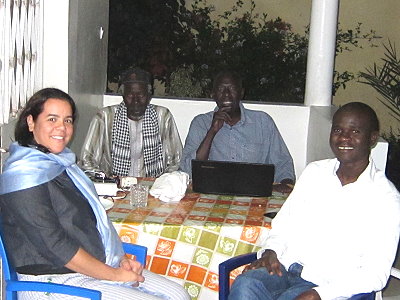 oversight and executive group in Yoff, was formed by Maria Fernanda Arraes Treffner, who had conceptualised the pilot training and served as key moderator, Mamadou Mbaye, chair of the local committee of the academy and member of the national committee, Aliou Sall, vice president of Mundus maris and chair of the national committee of the academy, and Khaly Mbengue, member of the local committee and of APECSY, a key supporter of the academy's pilot phase in Yoff.
oversight and executive group in Yoff, was formed by Maria Fernanda Arraes Treffner, who had conceptualised the pilot training and served as key moderator, Mamadou Mbaye, chair of the local committee of the academy and member of the national committee, Aliou Sall, vice president of Mundus maris and chair of the national committee of the academy, and Khaly Mbengue, member of the local committee and of APECSY, a key supporter of the academy's pilot phase in Yoff.
The action team comprised Maria Fernanda and Khaly (facilitation), Aliou and Mamadou (support in translation), and Sow and Omar (support in reporting).
For three days, a group of 25 people, representing the fishing community as social, political and religious leaders, members of the local committee of the SSF academy and community members engaged in the various activities along the artisanal fisheries value chain. Participants carried out a series of analyses, visualisation exercises and exchange sessions focused on envisioning sustainable futures and catalising change.
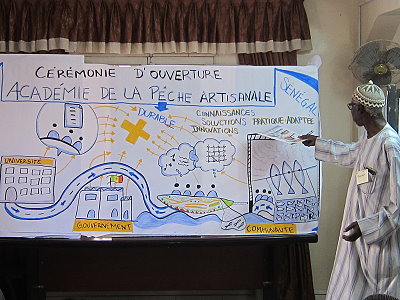 Together they challenged attitudes and behaviours. The participants felt inspired by the opportunity to evolve a positive vision of life.
Together they challenged attitudes and behaviours. The participants felt inspired by the opportunity to evolve a positive vision of life.
Mamadou Mbaye opened the training workshop with a prayer and a debriefing about the inaugural session of the academy last year. The academy is intended to support the implementation of the Voluntary Guidelines to ensure sustainable small-scale fisheries in the context of food security and poverty eradication.
Aliou Sall followed suit with an explanation of the process leading up to the adoption of the SSF Guidelines in 2014 by the FAO Committee of Fisheries and their inclusion in the Sustainable Development Goals (SDGs) a year later by the UN General Assembly.
In order to make sure that all participants had the same basic information, he also reported on the results of the FAO-CECAF Regional Consultation convened 2018 in Dakar on the most relevant features of the guidelines that should be prioritised in the region. These focus on a series of measures around three themes: governance, social development and value chains with climate change. Disaster risks (and to a lesser extent gender challenges) were treated as cross-cutting issues.
 Participants then introduced themselves briefly to one another. As per the next step to get started, the facilitation team invited everybody to draw up a picture he or she wanted to be identified by so as to avoid excluding any participants from active engagement who did not have much or any formal schooling.
Participants then introduced themselves briefly to one another. As per the next step to get started, the facilitation team invited everybody to draw up a picture he or she wanted to be identified by so as to avoid excluding any participants from active engagement who did not have much or any formal schooling.
The objective of the training workshop was clarified again as to
- Improve the understanding of the local context in Yoff as a result of a participatory analysis of the situation of the community by considering the socio-economic and cultural aspects;
- Appreciate the interest of the stakeholders in the academy and more specifically in the initiative "Gender-focused action learning system for sustainable small-scale fishing";
- Test the combination of methods and tools for dialogue and graphical facilitation, and the application of simple GALS catalytical diagrammes (vision of a happy life, gender diamond, gender balance tree), as well as sharing structures and mechanisms.
- Discover individual routines, groupings and organisations for the implementation of upcoming activities appropriately.
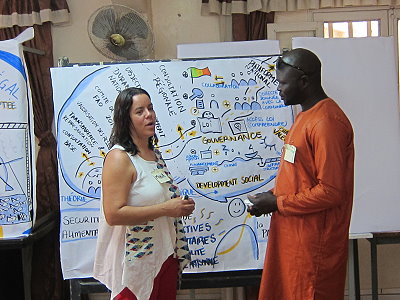 The expected results at this early stage were
The expected results at this early stage were
- an understanding of the participants what the academy could become and the purpose of the pilot training;
- a priority list of gender issues identified by men and women;
- a clear plan for change of each individual participant that could be monitored in their personal notebooks;
- clarity about the purpose of a follow-up catalyst-for-change workshop.
Much of the remainder of the first day was spent individually by drawing up pictures of what each participant considered the ingredients of a happy life.
For this, each one had received a notebook and pens so as to produce his or her personal teaching aid of the methods and the initial analysis of conditions that could progressively be expanded and developed.
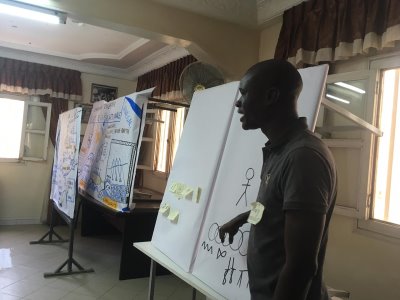 Throughout the three days of training, much facilitated without many words, but rather with pictures drawn up by the participants themselves, each step or tools introduced was not only practised by the participants individually during the course, but also tried at home with family or neighbours and discussed back in the group for clarification and better appropriation.
Throughout the three days of training, much facilitated without many words, but rather with pictures drawn up by the participants themselves, each step or tools introduced was not only practised by the participants individually during the course, but also tried at home with family or neighbours and discussed back in the group for clarification and better appropriation.
The following mostly visual analytical tools were used:
- symbol of identity
- drawing of a happy life
- drawing of a medium-term plan for life improvements
- gender justice diamond to reach consensus among women and men about the major gender issues
- gender balance tree to analyse and reflect together about gender and other issues and how to create an equilibrium at individual and family levels
- a way towards the next steps of the academy and its training approaches.
An illustrated documentation of the pilot training is available here (FR).
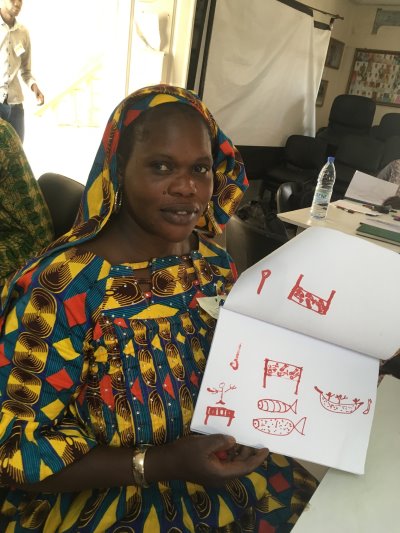 |
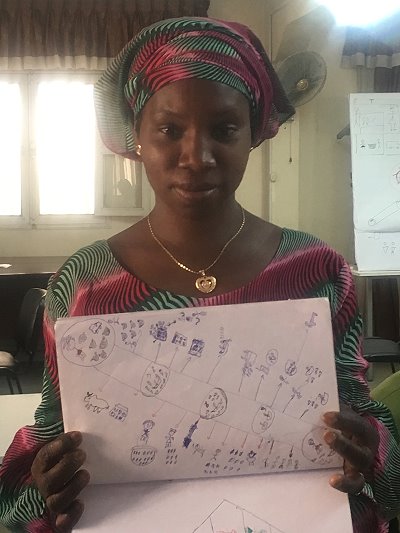 |
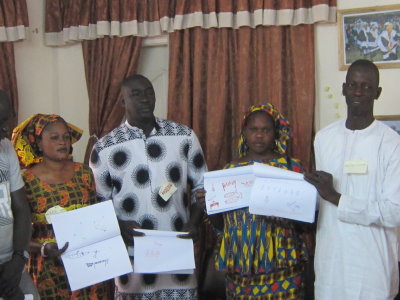 |
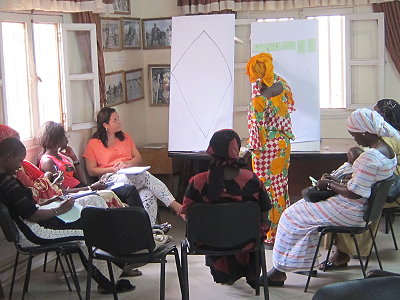 |








